What are fire doors?
Fire doors are found inside a variety of buildings, including flats, shops, offices, factories, hospitals, schools, care homes, bars, restaurants, libraries, and sports centres.
They help to compartmentalise a building, such as a block of flats, keeping fire and smoke trapped for a while in one area, so that people can be safely evacuated and the fire can be tackled.
Why is a fire door important?
When a fire door is closed and in good working order it can stop the spread of fire and smoke within an area, allowing people valuable time to evacuate or remain safe in their home.
Fire doors successfully hold back smoke and flames, keeping occupants safe and giving the fire service time to put out the fire without substantial damage to the home.
It's important that fire doors are not propped open, and that any damage is reported immediately. Doors that are locked open or damaged will not hold back a fire or smoke.
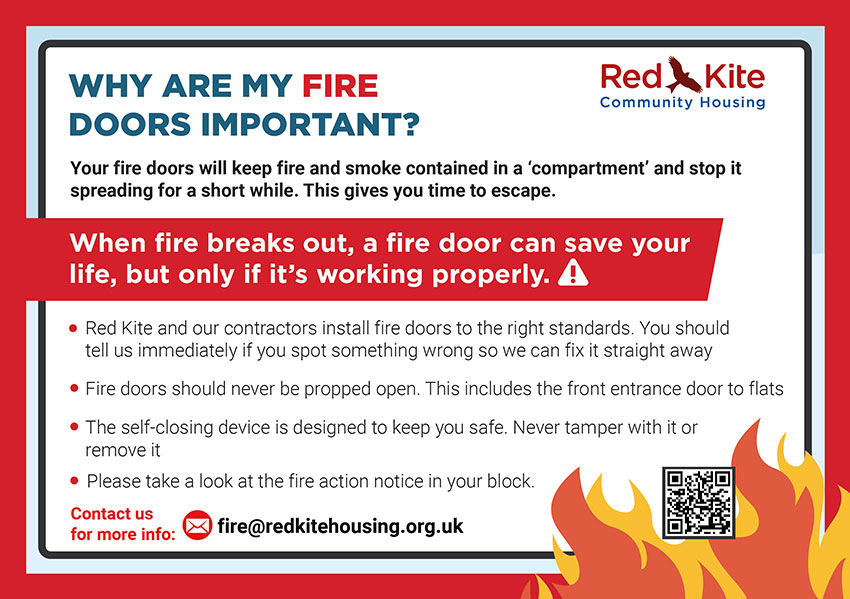
How to identify a fire door
A fire door within a communal area can be identified in many ways, but the most common way is with a blue sign fixed to the door. This will say that it’s a fire door, and whether it needs to be kept shut or locked.
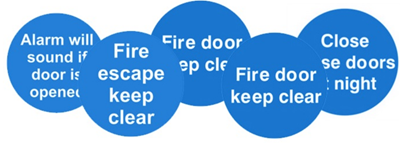
- All doors within a block of flats that lead from a communal space into someone’s home must be a fire door, where a 'stay put' policy is in effect.
- The minimum specification for a fire door is FD30S. This means that the door is fire and smoke resistant for a minimum of 30 minutes, allowing people to remain safe in their homes if the fire is in another part of the building.
- All fire doors should have a working self-closer. This ensures that compartmentation is always maintained, stopping the spread of smoke and fire.
- If a door cannot close into the frame under its own weight it may risk the lives of others within the building.
- New fire doors have a plug (top of the door) or a label on the top or side of the door. This gives information relating to its fire rating (the minimum length of time it will resist a fire for), if the door was fitted with smoke seals, and if glazing was fitted when it was manufactured. Some doors do not have this information because the label has been removed.
If you have any questions relating to a door that you've seen within one of our blocks, email fire@redkitehousing.org.uk.
Checking a fire door in five easy steps
Have you seen a fire door that’s damaged, poorly maintained or being propped open? Reporting it could be the difference between life or death in the event of a fire, and will help us keep everyone safe, and maintain a ‘stay put’ policy.
As a landlord of several hundred purpose-built blocks of flats, it's impossible for us to check every door every day. Therefore, it's important that people who visit, live or work in one of our blocks tell us about faulty or damaged fire doors.
This Five Step Fire Door Check outlines what to look for if you have any concerns about a fire door:
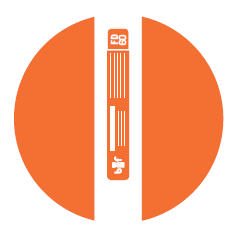
Check for certification. Is there a label or plug on top (or occasionally on the side) of the door to show it is a certificated fire door?

Check the gaps. The gaps around the top and sides of the door should be less than 4mm when closed.
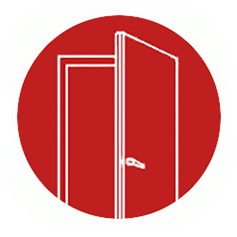
Check the seals. Are there any intumescent seals (designed to swell when exposed to heat) around the door or frame, and are they intact with no sign of damage?

Check the hinges. Are the hinges firmly fixed (three or more of them), with no missing or broken screws?
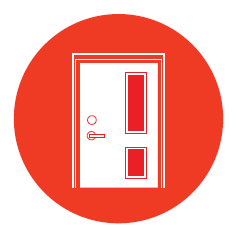
Check the door closes properly. Open the door about halfway, let go and allow it to close by itself. Does it close firmly on to the latch without sticking on the floor or the frame?
If you find that the door doesn't appear to meet one of the five steps, please report it to fire@redkitehousing.org.uk. Not all doors without a plug or label will be unsuitable, but the door will be fully inspected by a competent person who will confirm if it is a nominal fire door - this is where an existing fire door's fire separation performance can't be proven, but it is assumed that the door is suitable to act as a fire door.
We will ensure that doors are checked by a competent person in line with current regulations and legislation. These checks will be in more detail, making sure not only that the door shuts, but also that the screws are correct, the pads to the hinges are fitted, and that any items fixed to the door are suitable.
10 top tips – fire doors in flats
We all know that fire doors are important, but do you know why, what to look for if a door is damaged, who is responsible for the doors, and why a flat entrance door is so important in keeping people safe and keeping a fire from spreading? The British Woodworking Federation have created a 10 Top Tips poster, outlining all of these points.
Stay fire safe
This page has been all about fire doors and their importance in helping to stop the spread of fire, but there is more you can do to ensure you are fire safe:
- Check and test your smoke alarms. (Are they still battery operated? If so, let us know and we'll upgrade them.)
- Do you know how you would evacuate your home in the event of a fire? Create a fire plan that gets you out of your home in less than two minutes, and practice it.
- If you're in a block or a scheme, do you know if you are expected to stay put or evacuate? Check the fire signs around the block to find out.
- Never leave food cooking unattended, especially deep fat fryers and other frying equipment.
- Avoid using portable and fixed space heaters, as heating equipment is the second leading cause of house fire deaths.
- Teach your children about fire safety. There's some great resources and videos on the London Fire Brigade website.
Get in touch
If you have any questions or need to report a damaged or faulty fire door please contact us at fire@redkitehousing.org.uk.
